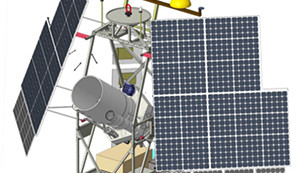Dutch cameras for NASA
on

NASA has selected a mission that will measure the radiation from the interstellar medium (the space between the stars) using Dutch far-infrared cameras. The balloon telescope mission GUSTO will make the first complete study of all the phases of the life cycle of stars: from molecular clouds via the birth and evolution of stars and the gas clouds of dying stars and back to the beginning of the cycle. SRON (previously: Stichting Ruimte-Onderzoek Nederland, now: SRON Netherlands Institute for Space Research) and the TU Delft developed the most important detector technology.
GUSTO means Galactic/Extragalactic ULDB Spectroscopic Terahertz Observatory. The mission comprises a telescope with an aperture of one meter and three observation instruments. The whole system is carried by an Ultra-long Duration Balloon (ULDB). GUSTO will fly 40 kilometers above Antarctica, at the boundary of space. In December 2016 GUSTO’s predecessor STO2 was launched to test the Dutch technology and as a demonstration.
SRON and the TU Delft contributed with hot electron bolometer cameras for three different 'colors' of far-infrared and an innovative phase grating, which will help the detectors in determining the exact far-infrared wavelength. GUSTO measures the emission lines of carbon, oxygen and nitrogen. The unique and novel combination of data helps to answer complex questions about the interstellar medium and will map large parts of the Milky Way and the Large Magellanic Cloud.
The launch of GUSTO is tentatively planned for 2021 from McMurdo in Antarctica. The flight is expected to last 100 to 170 days, depending on the weather conditions.


Discussion (0 comments)